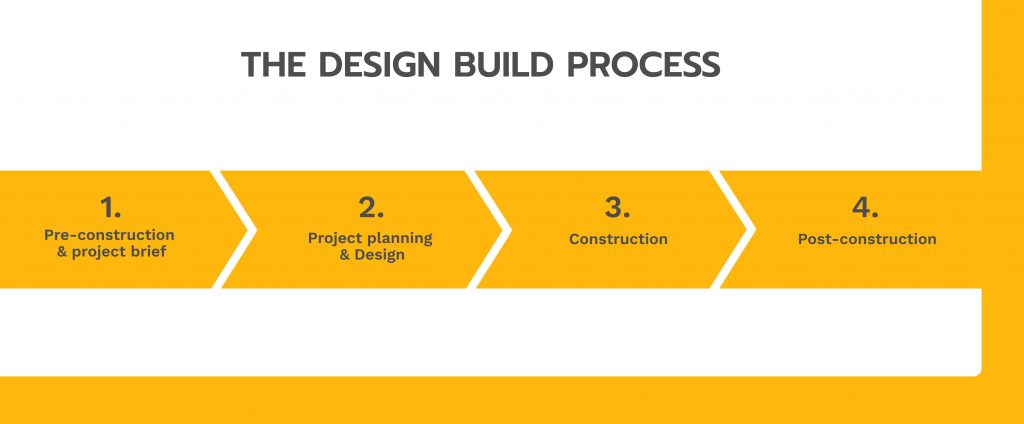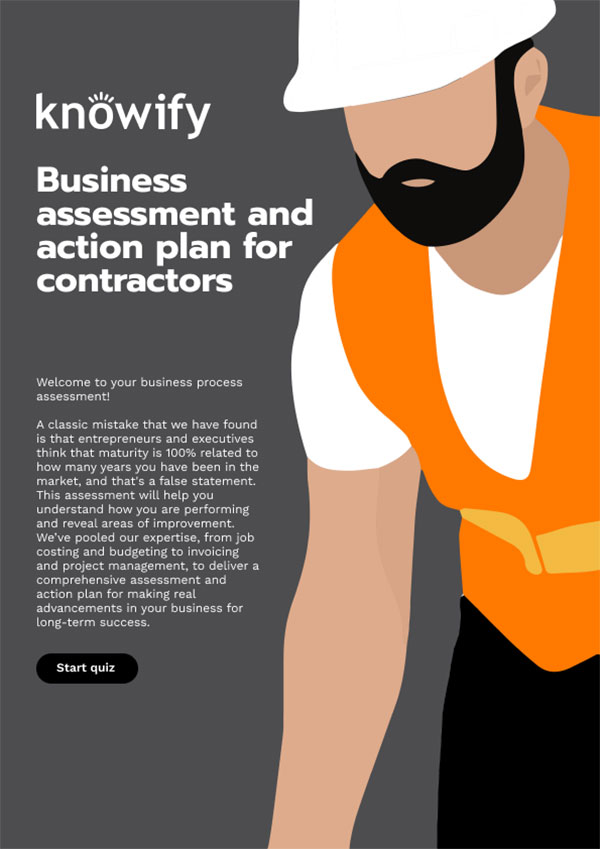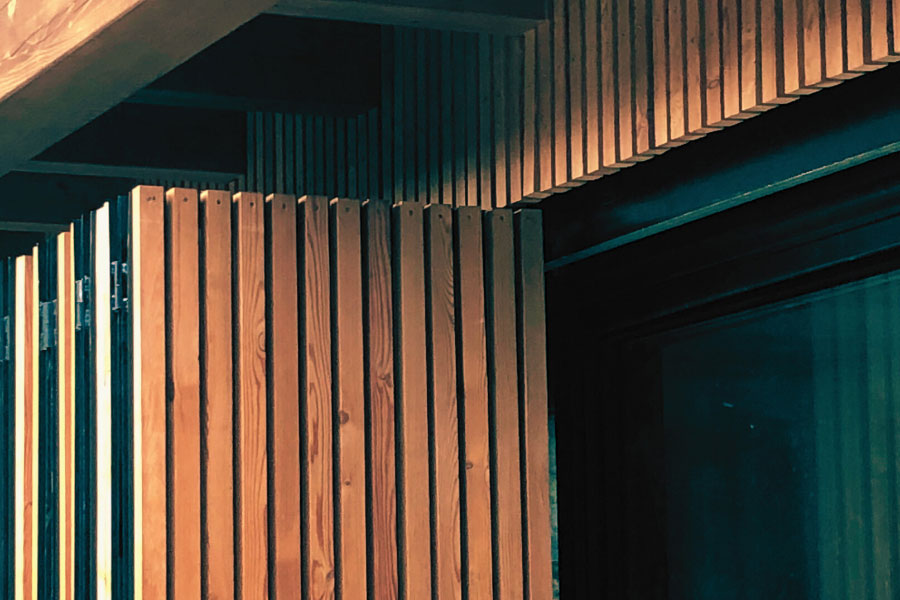It’s no secret that design-build construction has been increasing in popularity as a project delivery method in the last few years. A recent study found that 58% of owners in the construction industry intend to use design-build as opposed to using traditional design-bid-build project systems.
Design-build is no longer the alternative; increasingly becoming the preferred delivery system amongst builders. In fact, 44% of construction dollars will be spent on design-build projects throughout the US in the coming year. This comes as no surprise, as the same study found that when looking at the causes of rework on projects, up to 70% of rework is the result of design-induced flaws.
Utilizing the design-build method in construction projects aims to reduce the risk of delays and cost overruns and improve overall project management. This article will look at this project delivery system, how it operates, how it impacts construction management, and what it means for subcontractors.
What is construction design-build?
Design-build construction is a delivery system in which the same firm (comprising architects, engineers, general contractors, and specialty contractors) provides planning, design, and construction services as one entity.
Traditionally the design phase and execution of a project, under a design-bid-build model, is handled with separate contracts. With design-build, the designer and builder form a single entity under one contract, known as a design-build firm, thus allowing for a single source of responsibility. As a result, all risk falls on the design-build team, who will work together through all project phases from concept to completion.
Design-build construction process
Utilizing the design-build method, projects typically adhere to the following steps:

Step 1 – Pre-construction & project brief
The design-build team, in collaboration with the owner, will develop a project brief to kick start the project. The project brief is an opportunity to discuss needs, wants, specifications, and budget requirements. From here, milestones, timelines, and budget details are negotiated to ensure all parties are on the same page.
Once in agreement, a contract is drafted, including a scope of work, outlining precise payment details. All expectations will be presented in the contract, resulting in a carefully crafted plan.
Finally, the success of a design-build contract hinges on the merits of the team that will execute the project. The early stages will see the hiring of builders, architects, and engineers. From there, contractors will onboard as needed, either by a general contractor or the owner.
This team will then unite on a single contract to form a single entity. Rather than aiming to execute just your specific tasks, overall project success becomes everyone’s primary objective.
Step 2 – Project planning & design
Project planning involves the design-build team working together to match the project’s vision to the budget. This step will see the development of preliminary drawings, cost estimates, schedules, and site visits.
Collaboration between the architects, engineers, and contractors is paramount here. Input from all stakeholders, from the ground crew to the lead architect, will ensure all parties involved are working as one team with one goal – delivering quality results in a cost-efficient manner.
It’s also necessary to explore how a GMP (guaranteed maximum price) works into the equation. A builder team may want to include subcontractor bids with a GMP to foster a competitive bidding process and to control costs. If costs do go over, it’s on the design-build team to cover the costs and not the owner.
Step 3 – Construction
Considering much of the leg work on planning has already been completed, the construction phase, in theory, can move forward as a streamlined construction process. Of course, if something can go wrong, it will.
Unforeseen complications are inevitable. But, the design-build process is formulated to reduce the number of change orders needed. This is of great importance, as 35% of all construction projects experience major changes. Design-build aims to account for significant changes early in the process ahead of construction.
It does this through a single team that can communicate from the ground—allowing for issues to be accounted for well before actual construction begins. This helps reduce the odds of rework that could result in costly project delays.
Step 4 – Post-construction
An excellent design-builder team will incorporate a hand-off process, in which the team will transition the project over to the owner. This includes a walk-through, time to answer questions, and any necessary training. This ensures the owner has the information and instruction needed to maintain the final product once construction has ended.
How design-build contracts work
Under a design-build contract, the owner and design-build team, as one entity, will work collaboratively to develop a scope of work, project design, and bid. Next, typically based around a fixed, up-front price, all stakeholders review, negotiate, and sign off the total cost.
In general, a design-build contract will include the following:
- Scope of work
- Cost
- Payment terms
- Timeline
- Deliverables
- Terms and conditions.
In addition, it’s recommended to include an outline detailing the responsibilities of the design-build team, owner, and any subcontractors, vendors, or stakeholders involved. The contract may also include clauses related to warranties, insurance, dispute resolution, and indemnification.
A key responsibility of such contracts falls on the owner, who provides detailed input on the engineering and design specifications, such as what equipment will be used; detailed engineering drawings are essential for keeping consistency among the team.
In addition, another primary responsibility of the design-build team will include planning a procurement schedule; this takes careful consideration, as long-lead times, supply of materials, and market fluctuations can significantly impact a project.
A unique feature of design-build contracts allows contractors to start work on specific components of a job while other phases are still in the design. In many circumstances, this results in a shorter project timeline as design and construction can be done in parallel.
While work is completed, it’s common to include milestones where the owner must step in and provide feedback on the progress, responsibilities, and execution of the job as it progresses. These specific checkpoints should be defined in the contract and used to provide transparency between stakeholders while allowing the design-build team to correct course if needed.
How project delivery works in design-build agreements
After the project owner selects a proposal, design-build project delivery typically begins by securing the necessary permits. Once secured, construction can virtually start immediately. Many firms prefer to complete projects in phases where one phase is under construction while the following phase is designed.
For driving the project forward, design-build contracts will either be architect/designer-led or contractor-led. Architect-led contracts are reserved for design-heavy jobs that require difficult technical work, such as new buildings or remodels.
In contrast, contractor-led jobs are best for structured recurrent jobs such as infrastructure work. No matter who leads the project, contractors will have significant influence in the design process; the goal is to draw on contractor experience, technical expertise, and know-how to strengthen the project. Then, working as one integrated team designer and builders will execute the job according to the contract.
The Design-build team will be held accountable by the owner, who will monitor progress throughout the project. This includes identifying and communicating any inconsistencies between requirements and performance. In turn, the owner is financially responsible for correcting any discrepancies.
What are the advantages of design-build?
| Builds teamwork | |
| Single point of responsibility | |
| Transparent communication | |
| Eliminates adversarial conditions | |
| Cost reduction | |
| Faster project delivery |
Design-build’s main advantage is its potential for cost savings, better project schedules, and a single point of contact for projects. As mentioned earlier, all parties involved agree on a price early in the process, which tends to reduce change orders. This, in theory will lower total costs as a result of the project having less waste.
A considerable advantage from the customer’s perspective is knowing the price of the project upfront. Comparatively, on a plan and spec job, the owner will not know the cost of a job until the end of the project, when all change orders have been processed.
Cost will inevitably fluctuate from the agreed-upon budget. This is significant in an industry where only 31% of projects come within 10% of the original budget. Owner transparency from the initial phases of the project can mitigate communication issues that often plague projects that lack collaboration.
Utilizing design-build in construction projects aims to improve efficiency, coordination, and, ultimately, timelines by using one integrated team with one point of responsibility. Cost overruns, project delays, disputes, and other issues from juggling multiple contracts are minimized using one agreement that streamlines project delivery. As a result, fewer stakeholders are required, significantly improving communication as, in theory and practice, only one team executes the job.
Finally, as mentioned earlier, since teams can start construction on one phase and continue the design on different phases simultaneously, more time can be spent in the field getting work done, drastically cutting down the time between phases. For this reason, large projects under strict timelines are ideal jobs for a design-build delivery method.
What does design-build mean for subcontractors?
Design-build benefits for general contractors and owners are clear – reduced costs, time savings, pooled resources, and a single contract. However, you may wonder if those benefits translate to your role as a subcontractor or specialty contractor. The truth is, it depends.
Much of the design process can be offloaded to subcontractors resulting in what may feel like extra work for no additional benefits. Many subcontractors may also feel that they are at the bottom of the chain of command, diminishing their bargaining power.
These are all fair concerns. Although you may feel at the bottom of the pecking order, the more you work on design-build projects, the more you will understand the nuances of how the system works.
The more awareness you have, the less ambiguity there will be for the next project. Experience will propel you past the learning curve that comes with this system resulting in confidence that your opinions and voice matter.
That said, relationship building is where subcontractors can get the most out of the design-build project delivery process. Working on a tight-knit team allows for invaluable networking opportunities; if you can execute at a high level while getting your tasks done quickly, you can set yourself apart from competitors; establishing yourself as a top-tier specialist. Doing so goes a long way in generating additional leads for future projects with the same team.
In conclusion, a design-build project may not always be in your best interest as a subcontractor. If however, you have the opportunity to work in this system, the relationship-building potential is too significant to ignore.
Business assessment and action plan for contractors
Are you running your business or is your business running you? Take our 12-question business assessment for contractors to discover where and how to improve your efficiency and organization.
Based on your results you’ll receive an action plan providing steps for improving tracking, reporting, invoicing, project management, and more. Get the information you need to grow a healthier business for long-term success by taking our assessment today!

This assessment will help you understand how you are performing and reveal areas of improvement.
